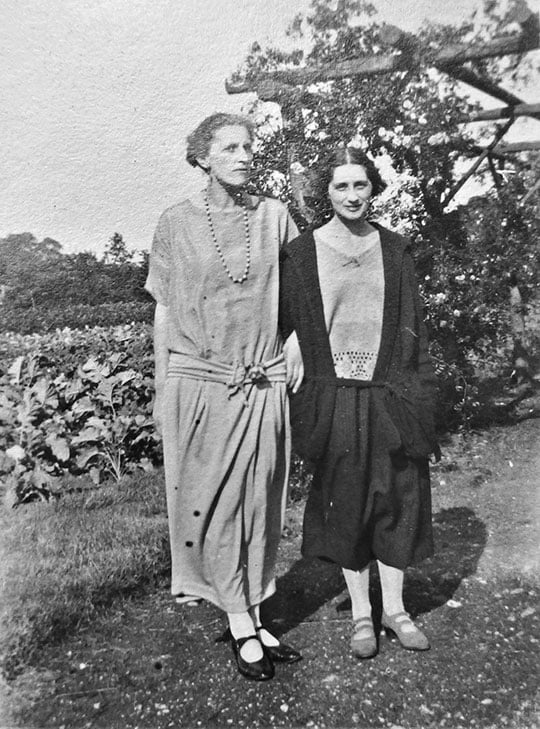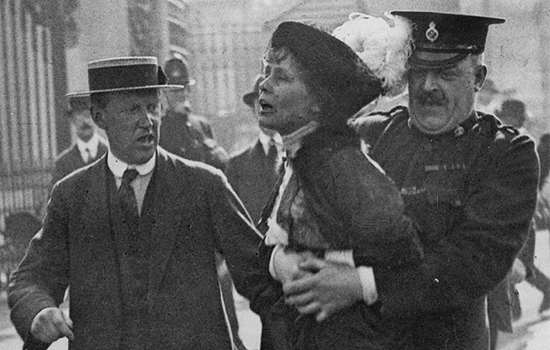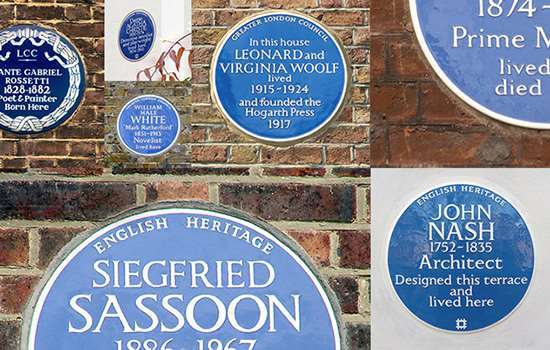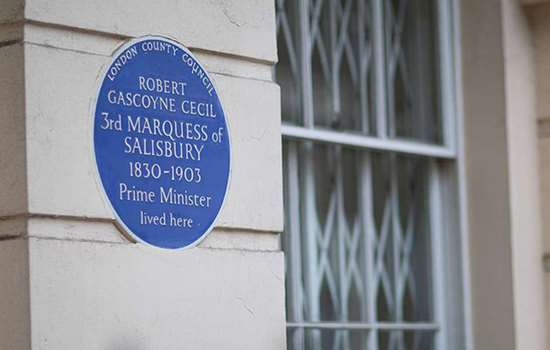HOLTBY, Winifred (1898–1935) & BRITTAIN, Vera (1893–1970)
Plaque erected in 1995 by English Heritage at 58 Doughty Street, Holborn, London, WC1N 2LS, London Borough of Camden
All images © English Heritage
Profession
Writers and Reformers
Category
Literature, Politics and Administration
Inscription
VERA BRITTAIN 1893–1970 WINIFRED HOLTBY 1898–1935 Writers and Reformers lived here
Material
Ceramic
Vera Brittain and Winifred Holtby were writers and reformers. A plaque at 58 Doughty Street, Holborn, marks the address they shared in the early 1920s.

Brittain and Holtby met at Somerville College, Oxford. At first, it was not obvious that they would become such close friends: they faced off in a debate about the educational value of travel, and Brittain was hurt when her argument, using earnest examples from her wartime experiences, were beaten by Holtby’s witty enthusiasm. Holtby saw that Brittain was upset, and after she apologised, they became inseparable.
They had key principles and experiences in common. Both had worked as nurses during the First World War, and both were determined to carve out more freedoms for women and change the world through their writing.
Doughty Street and first novels
Brittain and Holtby moved to 58 Doughty Street together in September 1922, having spent the previous nine months a few doors away at number 52. At the time, it was a bohemian place and their top-floor flat was infested with mice, though its windows caught the afternoon sun. They furnished it cheerfully, in blue and mauve, and worked as freelance journalists and in teaching jobs to pay the bills. Brittain later recalled that they had ‘few comforts and no luxuries except a tortoise called Adolphus’.
Both women had their first novels published in 1923. Holtby’s Anderby Wold was set in the Yorkshire of her childhood and reflected the clash between tradition and progress on an East Riding farm. Brittain’s The Dark Tide was an unflattering depiction of college life at Oxford. Brittain was a little envious that her friend beat her to publication, but Holtby graciously told her that they were only unequal in that Brittain’s mind was ‘keener and cleaner and finer’.
Later life
In late 1923, the pair moved to Maida Vale and continued to write. Holtby edited Time and Tide, published more novels including Poor Caroline and Mandoa, Mandoa! and wrote a critical study of Virginia Woolf. They continued to live under the same roof after Brittain’s marriage in 1925, latterly in Chelsea.
Holtby supported Brittain when she juggled the demands of parenting and her career, and with her struggle to write Testament of Youth. The novel was published in 1933 and dealt with the devastating blow to their generation dealt by the First World War.
Brittain supported Holtby too, enthusiastically responding to news of her lectures, journalism and feminist and anti-racist activism. Brittain wrote of her friendship with Holtby that, ‘Although we didn’t exactly grow up together, we grew mature together and that is the next best thing.’
After three years of poor health, Holtby died tragically early, of Bright’s disease, in 1935. South Riding, now her most famous work, was published posthumously.
Brittain’s biography of Holtby, Testament of Friendship, was published in 1940.
Further reading
- Alan Bishop, ‘Holtby, Winifred (1898–1935)’, Oxford Dictionary of National Biography (2004) (access with a UK public library card)
- Alan Bishop, ‘Brittain [married name Catlin], Vera Mary (1893–1970)’, Oxford Dictionary of National Biography (2004) (access with a UK public library card)
- Rohan Maitzen, ‘Review: Between Friends: Letters of Vera Brittain and Winifred Holtby by Elaine Showalter ed. Elaine Showalter and English Showalter’, Women’s Studies, 52:4 (2023).


